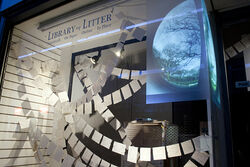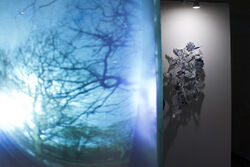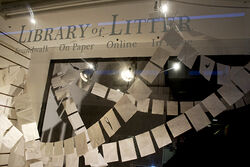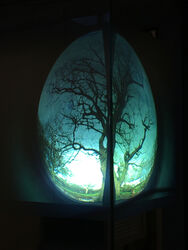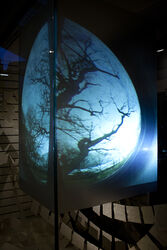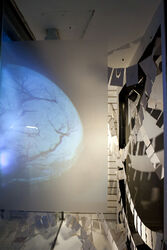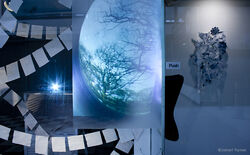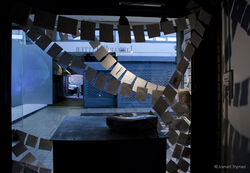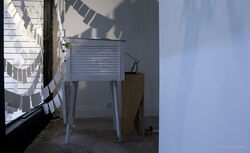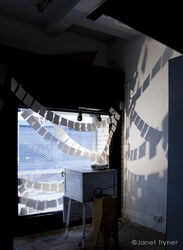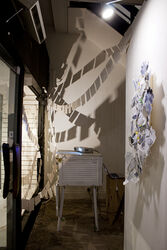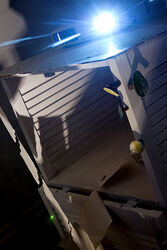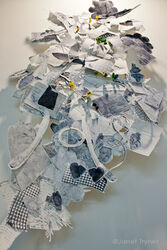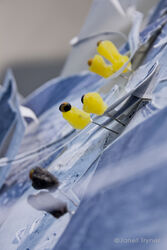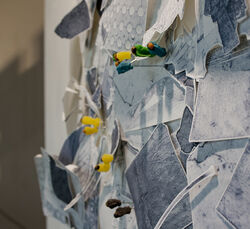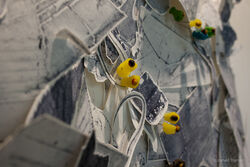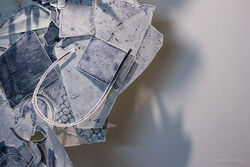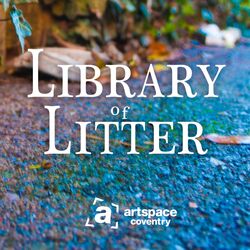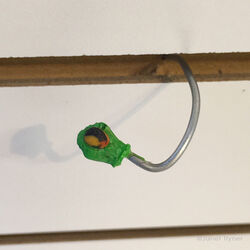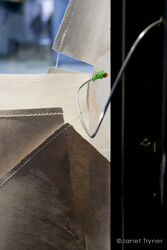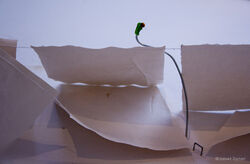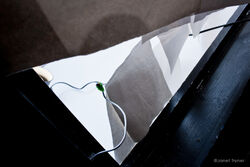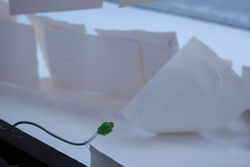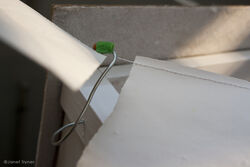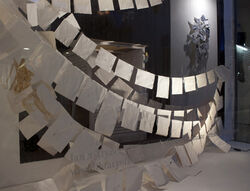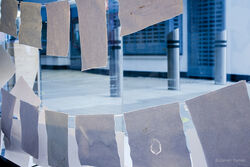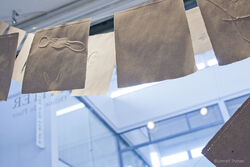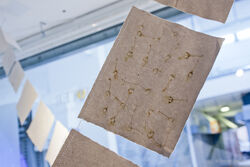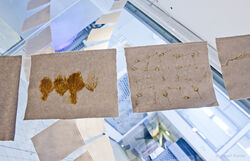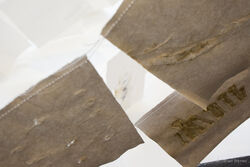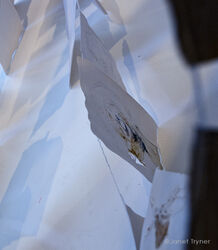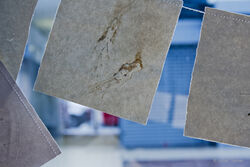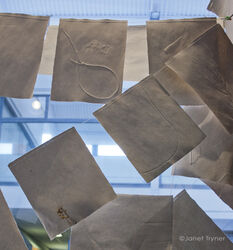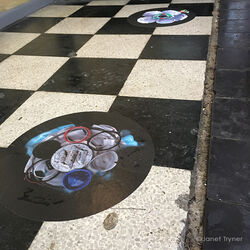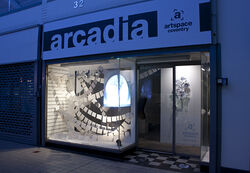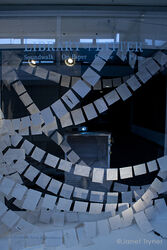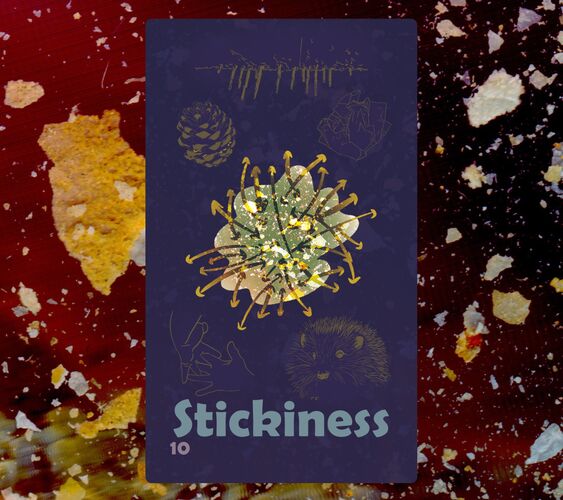Library of Litter
Coventry ArtSpace Arcadia Gallery 26/1-7/2 2021
Graduate artist-in-residence with Coventry ArtSpace solo exhibition
Library of Litter exhibition marked the end of my graduate artist-in-residence with Coventry ArtSpace where I used my studio space as base from which to explore urban ground nearby.
Although it took place during the the winter Covid19 lockdown, the residency still required engaging a local audience. There was an expressed wish for new visual culture but due to the pandemic audiences were prohibited from accessing indoor communal space. Therefore, I designed the exhibition to be accessible on multiple levels; via windows, augmented reality, website and as a soundwalk which featured poems inspired by my encounters with other lives in Coventry's ecosystem. Elements of this soundwalk are still accessible online via the Echoes app at this link: Link to Library of Litter Website
I set myself the task of trying to ascertain the soul of a place called Coventry via what I found on the ground. My resulting collection of human and botanic detritus became like a set of icons to me; all jostling for space within the project and within my understanding of space. Shorthand ways by which I came to understand land as an amalgamation of living things, with every being connecting at ground level in multiple ways.
In Library of Litter I attempted to reconstitute this body of work as sculptural documentation, and reorganisation of layered references within my finds, which are to me, as a library is; a flexible body of made of parts which can be read, revisited, withdrawn, reorganised and put back. Their separate meanings are deeply bound to external cultural reference but is at the same time loosened (they are just objects, they are just books).
My own connection to familiar things began to breakdown when I spent much time considering their state as combined objects and forgotten things. I began to think of litter as a bit like body parts; parts of selves are dropped and become part of a communal whole. The parts though remain themselves and carry meaning from their former lives, but now exist in a different phase. When the objects biodegrade, this cycle works, as with the botanic objects of leaves and seeds, etc. However, modern human litter often takes too long to biodegrade to be useful to a circular ecology that uses the action of littering to feed new life, instead it causes great damage.
Through thinking about litter I came to understand that we all drop things. That this is part of the organism we are, and that we share experience of this action with other organisms even though our connection with the ground has stopped working. This part of my research was expressed in the works 'Thing Blindness' and 'End Papers.'
Another, somewhat separate and early thread of my research, revolved around the shape of Knopper Wasp oak galls which I found in abundance on the ground in Coventry's parks. I used these as a focus to make sculptural research about inter-related species lifecycles and how DNA and environments are altered by parasitism. The human form of parasitism I saw all around expressed in plastics. These two materials came together as 'Polygalls'; knopper galls made in salvaged high density polyethylene.
By the time the solo show rolled round, this research began to meld functionally with my later thinking, as pushpins made with cast-resin from the gall interiors. These were integrated into End Papers and Thing Blindness.
Graduate artist-in-residence with Coventry ArtSpace solo exhibition
Library of Litter exhibition marked the end of my graduate artist-in-residence with Coventry ArtSpace where I used my studio space as base from which to explore urban ground nearby.
Although it took place during the the winter Covid19 lockdown, the residency still required engaging a local audience. There was an expressed wish for new visual culture but due to the pandemic audiences were prohibited from accessing indoor communal space. Therefore, I designed the exhibition to be accessible on multiple levels; via windows, augmented reality, website and as a soundwalk which featured poems inspired by my encounters with other lives in Coventry's ecosystem. Elements of this soundwalk are still accessible online via the Echoes app at this link: Link to Library of Litter Website
I set myself the task of trying to ascertain the soul of a place called Coventry via what I found on the ground. My resulting collection of human and botanic detritus became like a set of icons to me; all jostling for space within the project and within my understanding of space. Shorthand ways by which I came to understand land as an amalgamation of living things, with every being connecting at ground level in multiple ways.
In Library of Litter I attempted to reconstitute this body of work as sculptural documentation, and reorganisation of layered references within my finds, which are to me, as a library is; a flexible body of made of parts which can be read, revisited, withdrawn, reorganised and put back. Their separate meanings are deeply bound to external cultural reference but is at the same time loosened (they are just objects, they are just books).
My own connection to familiar things began to breakdown when I spent much time considering their state as combined objects and forgotten things. I began to think of litter as a bit like body parts; parts of selves are dropped and become part of a communal whole. The parts though remain themselves and carry meaning from their former lives, but now exist in a different phase. When the objects biodegrade, this cycle works, as with the botanic objects of leaves and seeds, etc. However, modern human litter often takes too long to biodegrade to be useful to a circular ecology that uses the action of littering to feed new life, instead it causes great damage.
Through thinking about litter I came to understand that we all drop things. That this is part of the organism we are, and that we share experience of this action with other organisms even though our connection with the ground has stopped working. This part of my research was expressed in the works 'Thing Blindness' and 'End Papers.'
Another, somewhat separate and early thread of my research, revolved around the shape of Knopper Wasp oak galls which I found in abundance on the ground in Coventry's parks. I used these as a focus to make sculptural research about inter-related species lifecycles and how DNA and environments are altered by parasitism. The human form of parasitism I saw all around expressed in plastics. These two materials came together as 'Polygalls'; knopper galls made in salvaged high density polyethylene.
By the time the solo show rolled round, this research began to meld functionally with my later thinking, as pushpins made with cast-resin from the gall interiors. These were integrated into End Papers and Thing Blindness.
